|
|
马上注册,结交更多好友,享用更多功能^_^
您需要 登录 才可以下载或查看,没有账号?立即注册
x
本帖最后由 Seawolf 于 2019-8-19 06:47 编辑
- Given n non-negative integers representing an elevation map where the width of each bar is 1, compute how much water it is able to trap after raining.
- The above elevation map is represented by array [0,1,0,2,1,0,1,3,2,1,2,1]. In this case, 6 units of rain water (blue section) are being trapped.
- Example:
- Input: [0,1,0,2,1,0,1,3,2,1,2,1]
- Output: 6
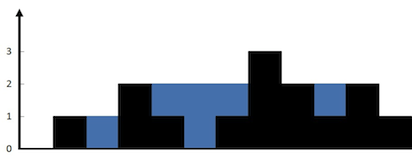
上面这个code虽然可以算出所有的结果,但是交给leetcode 去执行,会报run out of time error 也就是说 efficiency 太差了
下面尝试暴力解法
- class Solution {
-
- public static int trap(int[] height) {
-
- int len = height.length;
-
- if(len == 0){
-
- return 0;
- }
-
- int ans = 0;
-
- for(int i = 1 ; i < len-1 ; i++){
-
- int leftMax = 0, rightMax = 0;
-
- for(int j = i; j >= 0; j--){
-
- leftMax = Math.max(leftMax, height[j]);
-
- }
-
- for(int m = i ; m < len; m ++){
-
- rightMax = Math.max(rightMax,height[m]);
-
- }
-
- ans = ans + Math.min(leftMax,rightMax) - height[i];
-
-
-
- }
-
- return ans;
-
- }
- }
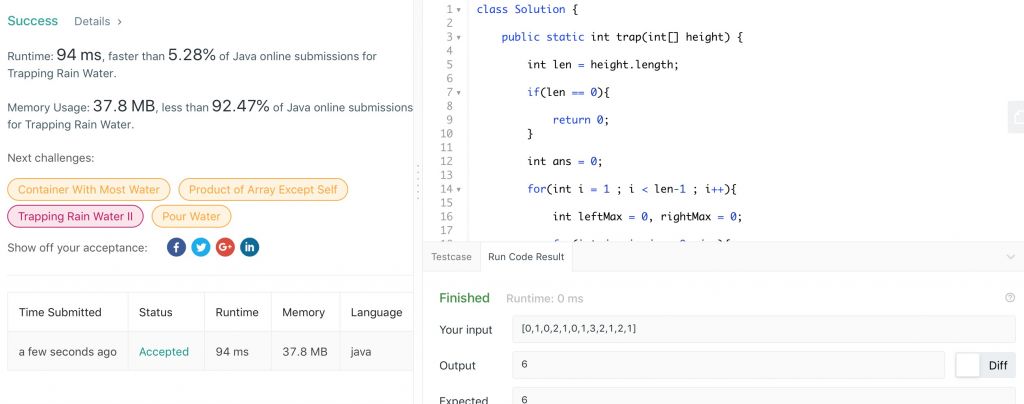
虽然通过了pass,但是效率依然是很低,继续改进代码。
- class Solution {
-
- public static int trap(int[] height) {
-
- int len = height.length;
-
- if(len == 0){
-
- return 0;
- }
-
- int ans = 0;
-
- int[] leftMax = new int[len];
-
- int[] rightMax = new int[len];
-
- leftMax[0] = height[0];
-
- for(int i = 1 ;i <len ; i++ ){
-
- leftMax[i] = Math.max(height[i], leftMax[i-1]);
- }
-
- rightMax[len-1] = height[len - 1];
-
- for(int i = len -2 ;i >=0 ; i-- ){
-
- rightMax[i] = Math.max(height[i], rightMax[i+1]);
- }
-
- for(int i = 0 ;i< len ; i++ ){
-
- ans = ans + Math.min(rightMax[i], leftMax[i]) - height[i];
- }
-
- return ans;
-
- }
- }
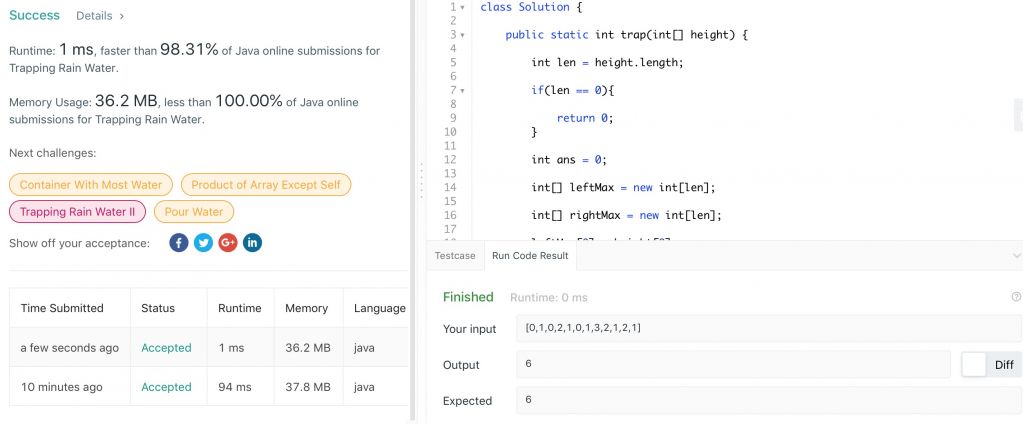
running time 由 O(N^2) 提高到O(N), 继续优化代码,使用双指针进行优化
how it works?
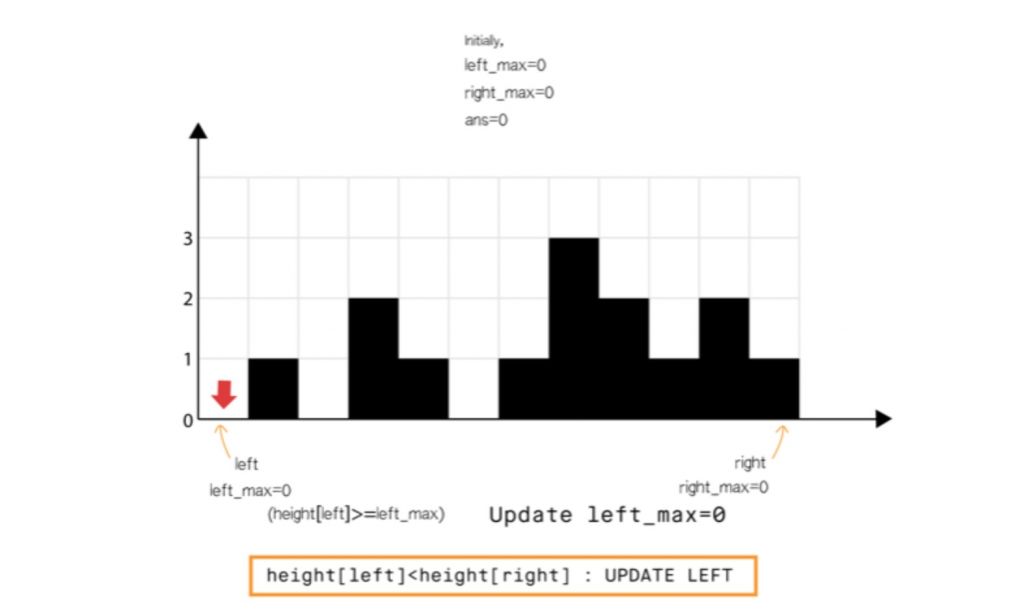
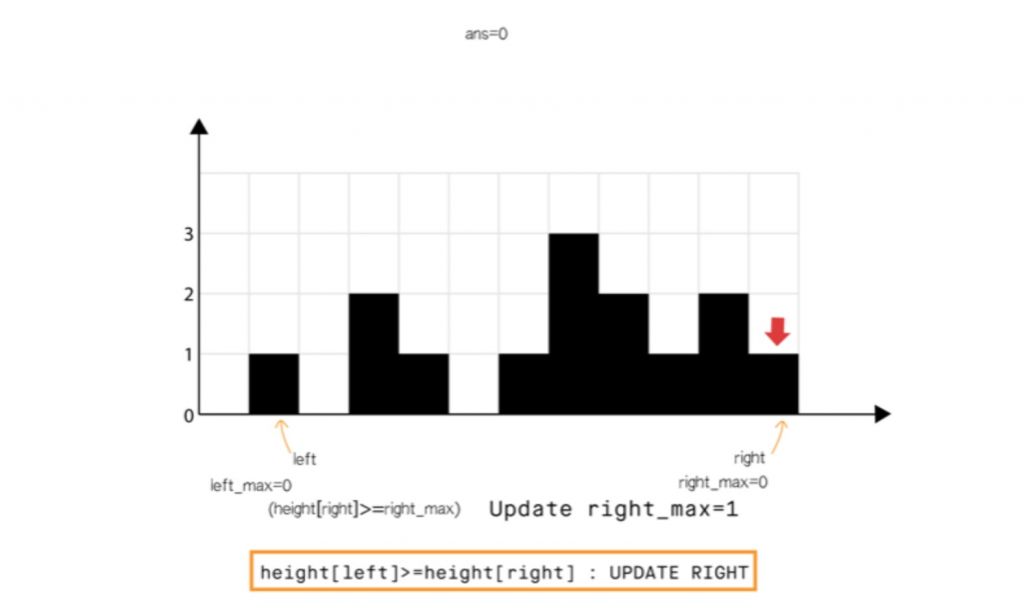
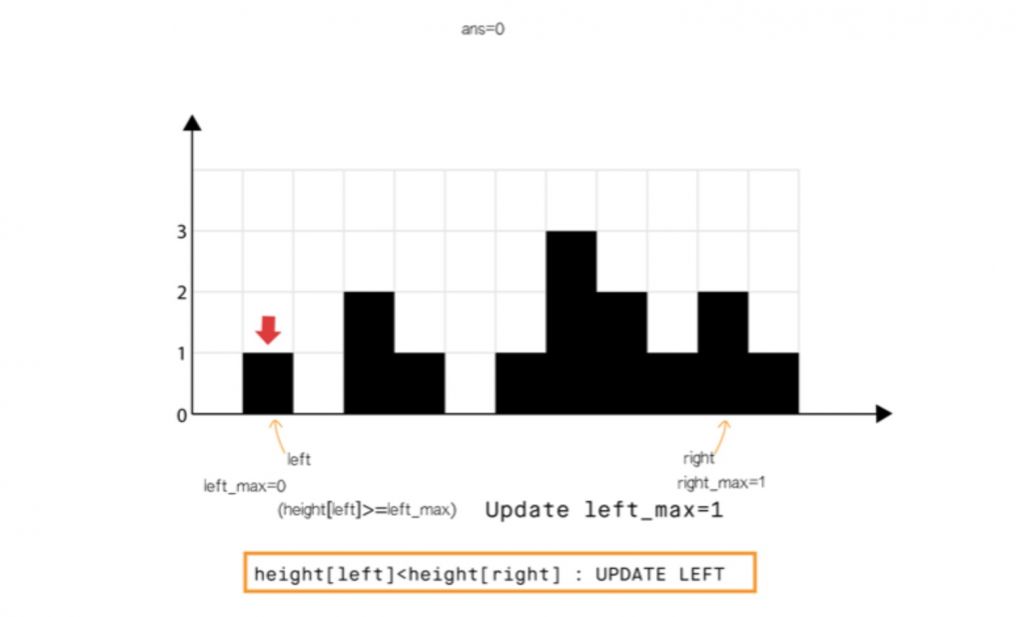
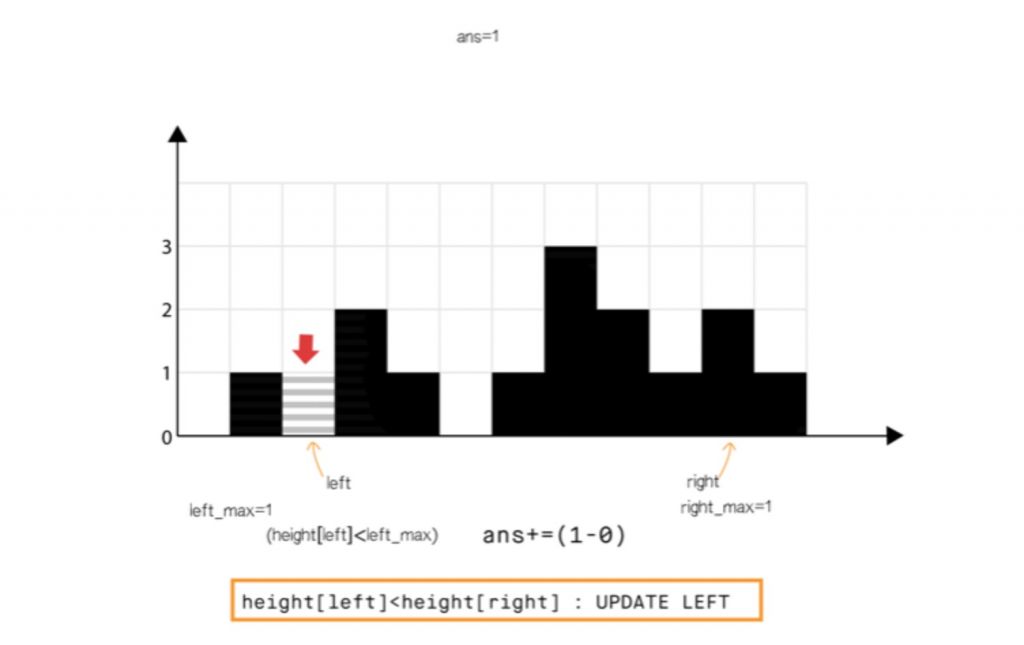
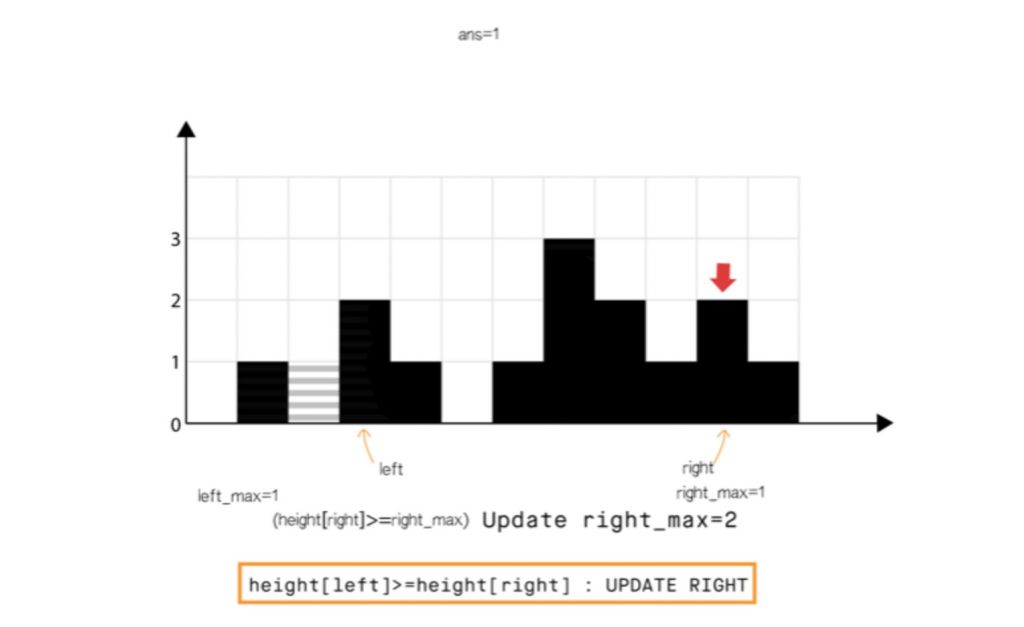
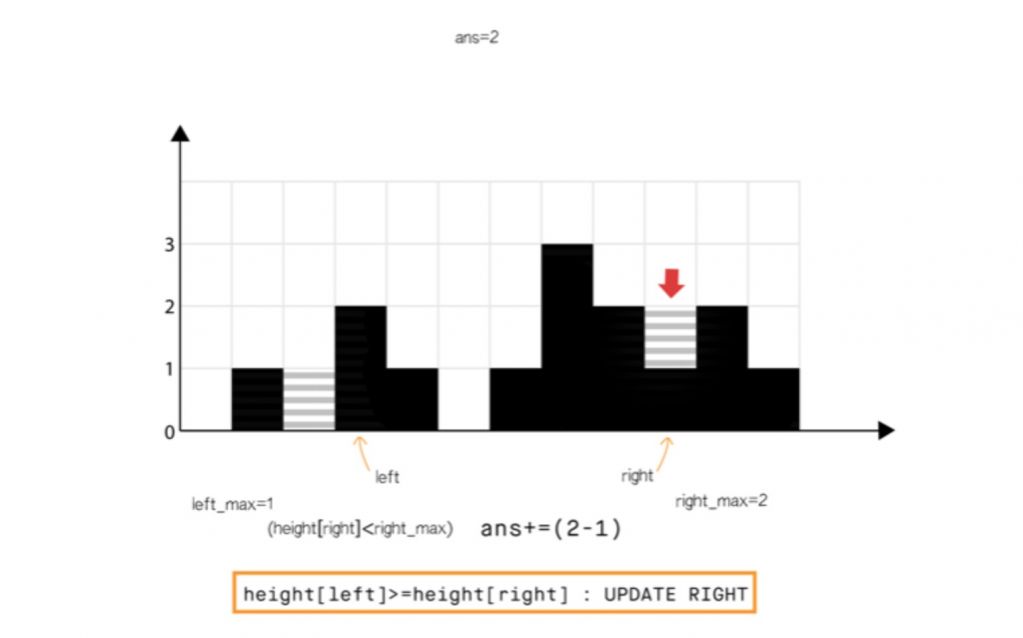
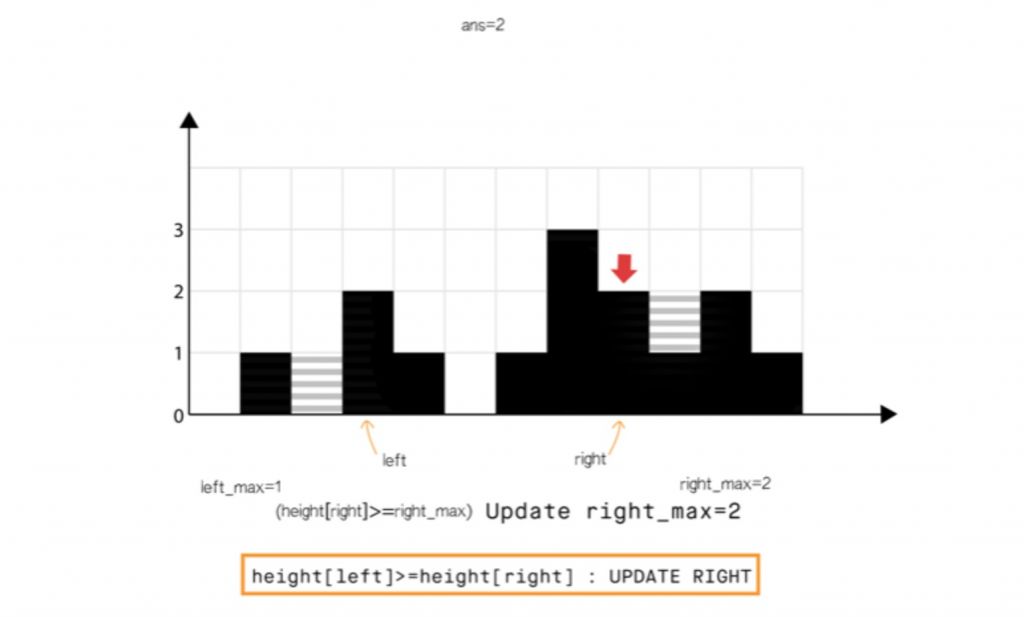
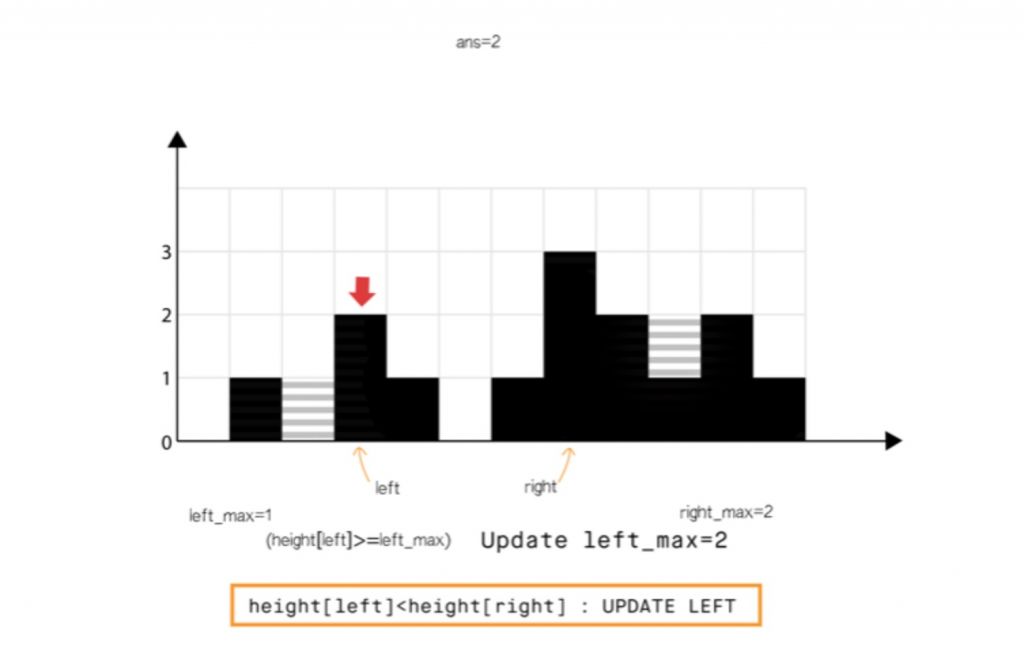
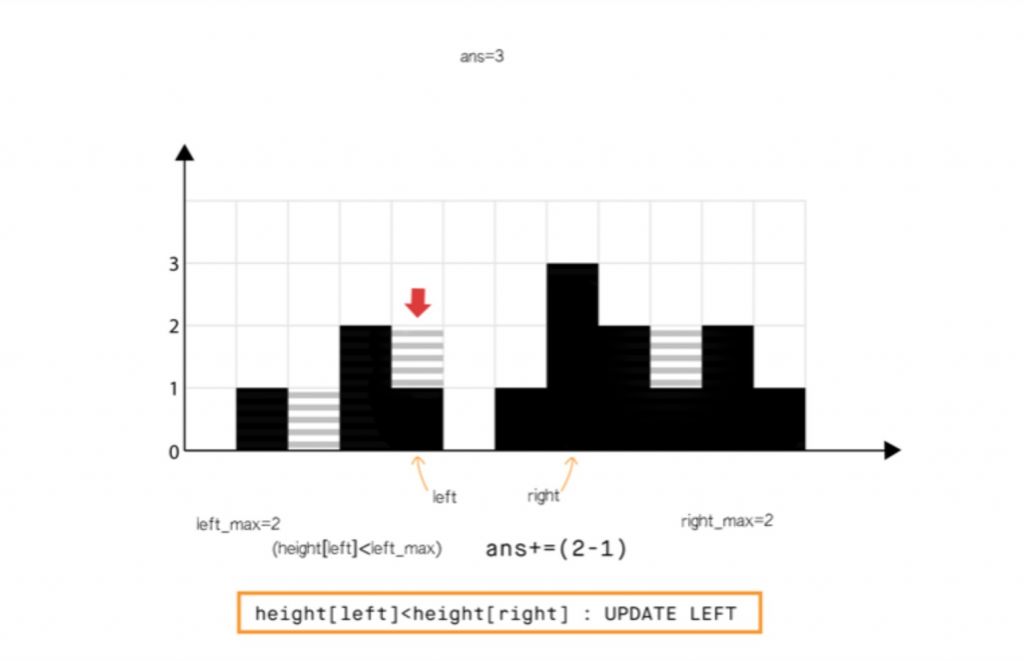
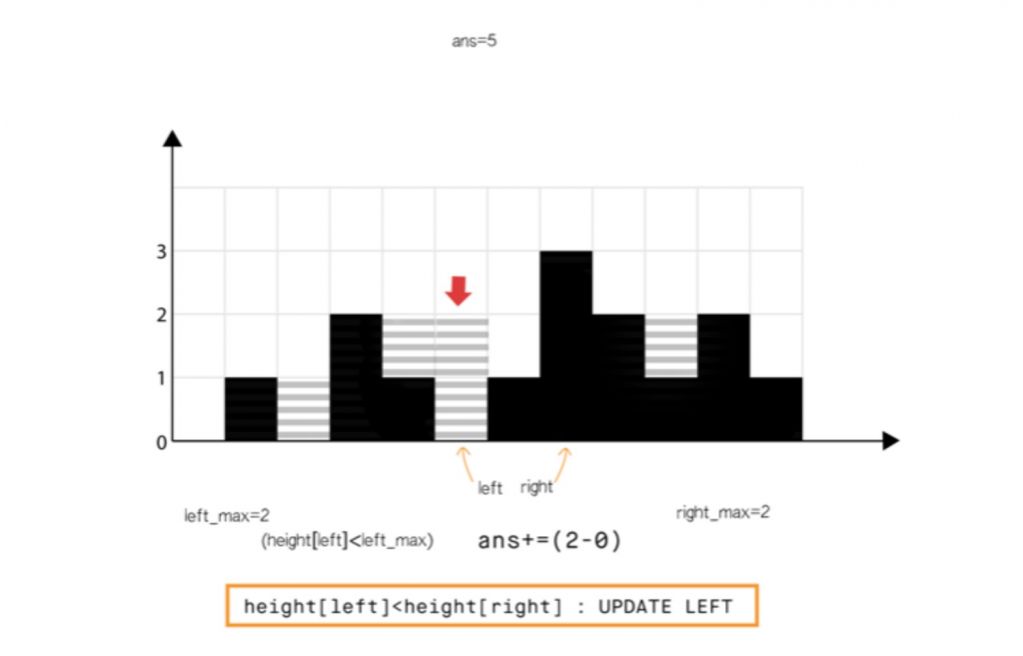
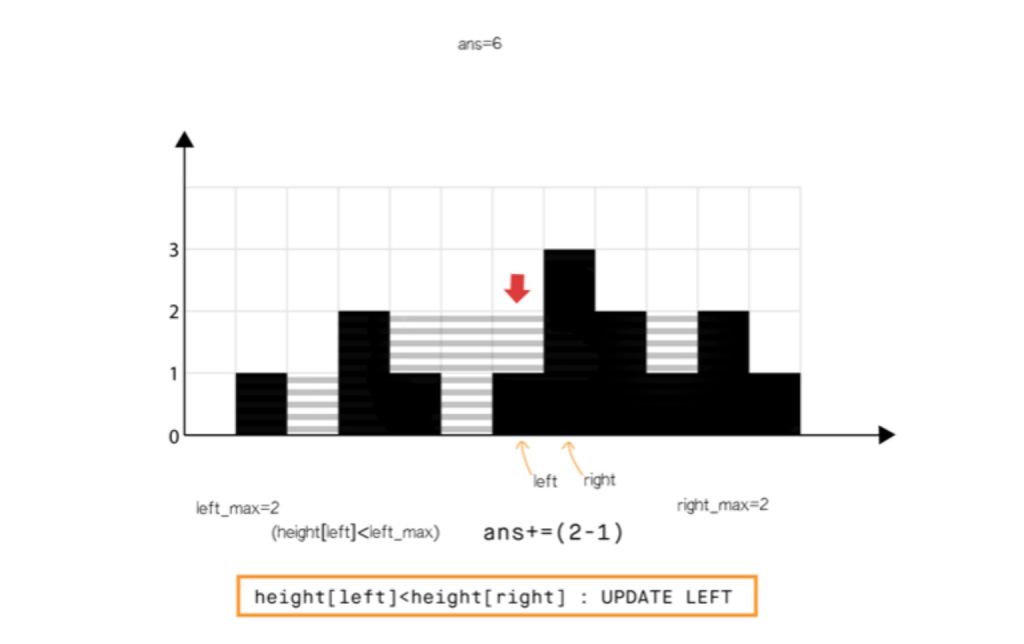
- class Solution {
-
- public static int trap(int[] height) {
-
- int ans = 0;
-
- int left_max = 0,right_max = 0;
-
- int left = 0,right = height.length- 1;
-
- while(left < right){
-
- if(height[left] < height[right]){
-
- if(height[left] >= left_max)
- left_max = height[left];
- else
- ans = ans + left_max - height[left];
-
- left++;
- }
-
- else{
-
- if(height[right] >= right_max)
- right_max = height[right];
- else
- ans = ans + right_max - height[right];
-
- right--;
- }
- }
-
- return ans;
-
- }
- }
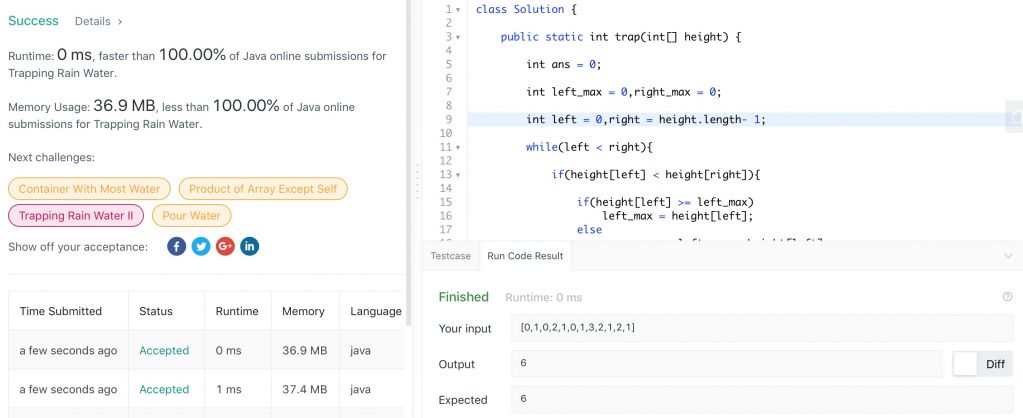
介绍另外一种方法,使用stack 栈来操作。
- class Solution {
-
- public static int trap(int[] height) {
-
- int ans = 0;
-
- int current = 0;
-
- int len = height.length;
-
- Stack <Integer> stack = new Stack<>();
-
- while(current < len){
-
- while(!stack.empty() && height[current] > height[stack.peek()]){
-
- int top = stack.peek();
-
- stack.pop();
-
- if(stack.empty()){
-
- break;
- }
-
- int distance = current - stack.peek() -1 ;
-
- int bounded = Math.min(height[current], height[stack.peek()]) - height[top];
-
- ans = ans + distance * bounded;
- }
-
- stack.push(current++);
- }
-
- return ans;
-
- }
- }
nice job!! |
评分
-
查看全部评分
|
 ( 粤ICP备18085999号-1 | 粤公网安备 44051102000585号)
( 粤ICP备18085999号-1 | 粤公网安备 44051102000585号)